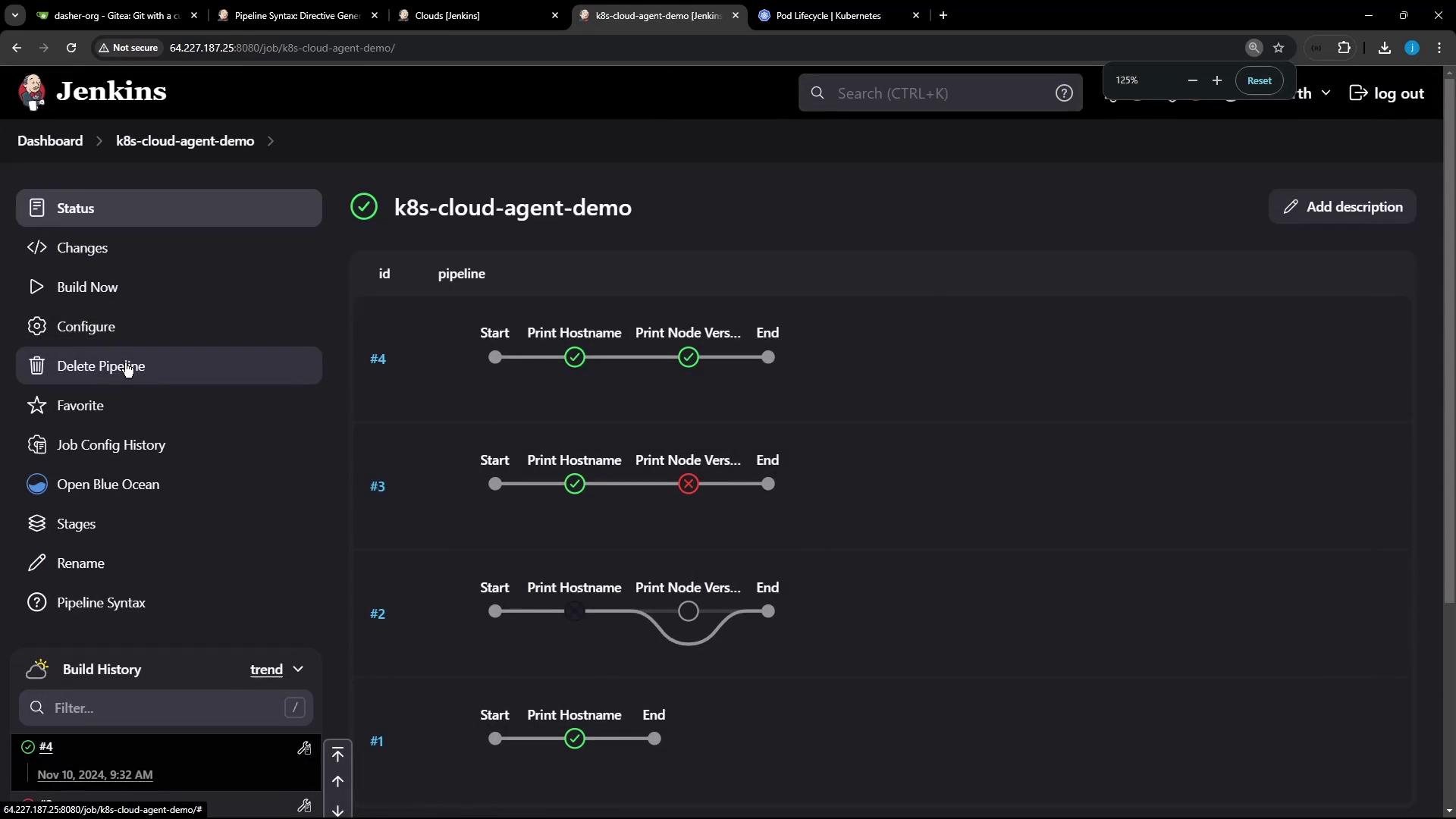Advanced Jenkins
Pipeline Enhancement and Caching
Sharing a File between Containers
By default, all containers within a Kubernetes Pod share the same filesystem. In this tutorial, we'll demonstrate how to create a file in an Ubuntu container and then read it from a Node.js container within the same Pod using a Jenkins pipeline.
Note
Containers in the same Pod share volumes and file systems, allowing seamless data exchange without additional configuration.
Jenkins Pipeline Configuration
Paste the following pipeline definition into your Jenkinsfile to set up two containers—ubuntu-container and node-container—in a single Pod:
pipeline {
agent {
kubernetes {
yaml """
apiVersion: v1
kind: Pod
spec:
containers:
- name: ubuntu-container
image: ubuntu
command: ['sleep']
args: ['infinity']
- name: node-container
image: node:18-alpine
command: ['cat']
tty: true
"""
defaultContainer 'ubuntu-container'
}
}
stages {
stage('Create File on Ubuntu') {
steps {
sh '''
# Display the hostname
hostname
# Write data to a file
echo important_UBUNTU_data > ubuntu-$BUILD_ID.txt
# Confirm the file was created
ls -ltr ubuntu-$BUILD_ID.txt
'''
}
}
stage('Access File on Node') {
steps {
container('node-container') {
sh '''
# Verify Node.js and npm versions
node -v
npm -v
# List and read the file created earlier
ls -ltr ubuntu-$BUILD_ID.txt
cat ubuntu-$BUILD_ID.txt
'''
}
}
}
}
}
Pipeline in Action
Once you commit and run this pipeline, Jenkins will create the Pod and execute both stages. The Ubuntu container writes ubuntu-$BUILD_ID.txt, and the Node.js container reads it immediately afterward.

According to the Kubernetes Pod Lifecycle documentation, all containers in a Pod can share volumes and files.

Console Output Example
Below is an excerpt from the Jenkins console log illustrating how the file is shared between containers:
[ubuntu-container] Running shell script
+ hostname
k8s-cloud-agent-demo-5-rv7b8-8frt0-n41pw
+ echo important_UBUNTU_data
+ ls -ltr ubuntu-5.txt
-rw-r--r-- 1 root root 22 Nov 10 09:47 ubuntu-5.txt
[node-container] Running shell script
+ node -v
v18.20.4
+ npm -v
8.19.2
+ ls -ltr ubuntu-5.txt
-rw-r--r-- 1 root root 22 Nov 10 09:47 ubuntu-5.txt
+ cat ubuntu-5.txt
important_UBUNTU_data
Comparing Jenkins Agent Strategies
Choose the right Jenkins agent model based on your infrastructure and maintenance requirements:
| Agent Type | Description |
|---|---|
| Kubernetes Cloud Agent | On-demand Pods; auto-provisioned and cleaned up per job. |
| Docker Agent | Temporary containers managed by Jenkins; easy to customize. |
| Static Node | Always-on VMs or servers; requires manual OS and tool updates. |
Warning
Static nodes demand ongoing maintenance (OS patches, software upgrades). For most CI/CD workflows, dynamic agents reduce resource waste and simplify updates.
Links and References
Watch Video
Watch video content